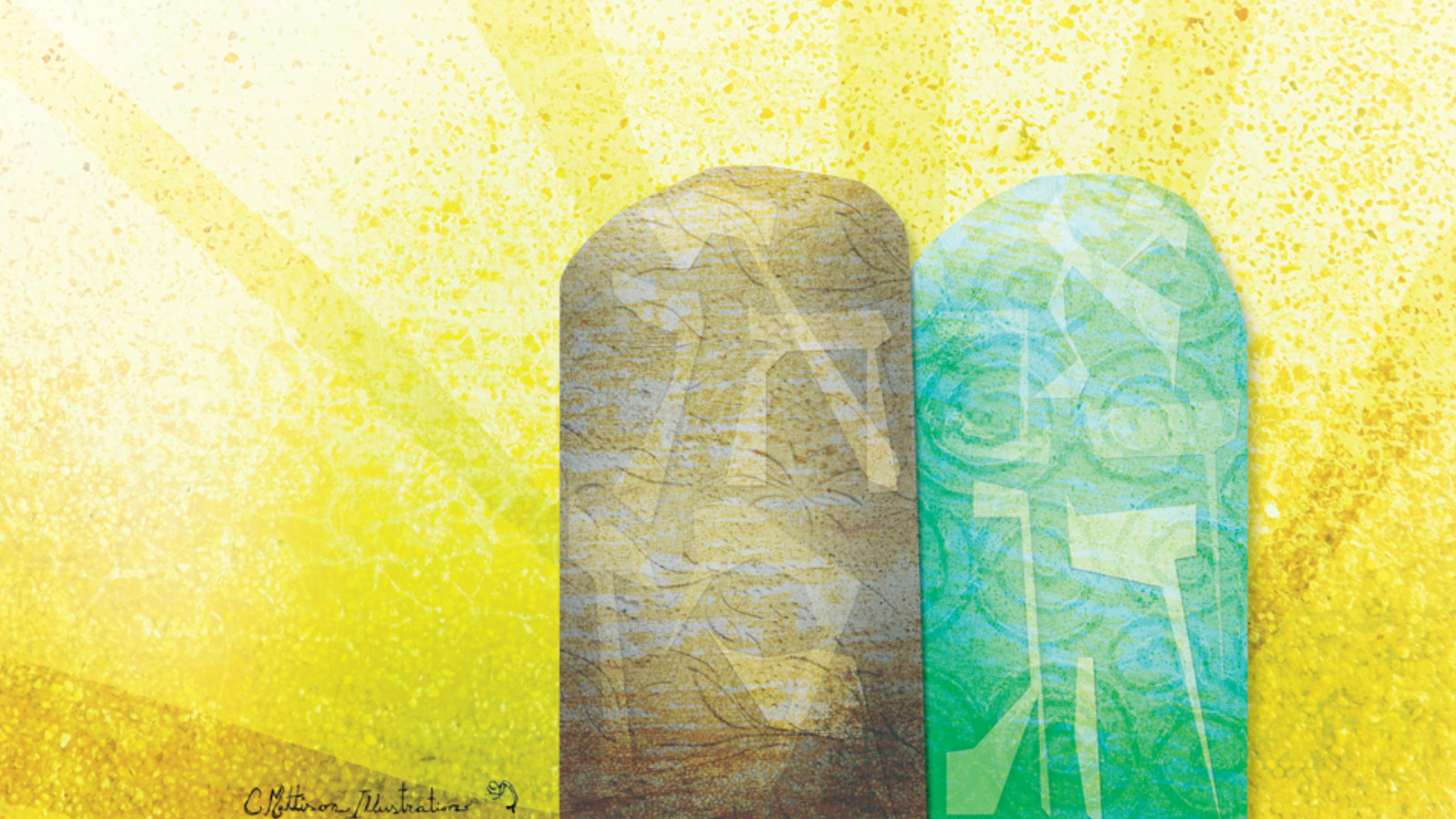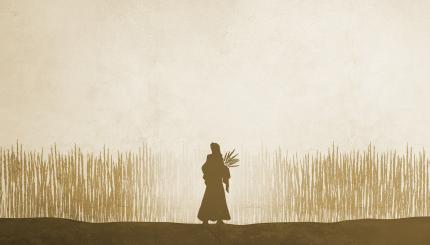Shavuot is a springtime holiday that celebrates the giving of the Torah on Mount Sinai. Alongside Passover and Sukkot, it is one of the three pilgrimage festivals, marked in ancient times by the gathering of the entire Israelite people at the Temple in Jerusalem. Like the others, it is also timed to an important moment in the agricultural calendar: the first grain harvest of the season.
Though it is less observed in modern times than other Jewish holidays, Shavuot marks one of the most important moments in Jewish history, the giving of the Torah on Mount Sinai. This was the moment when, in the Jewish understanding, God’s will was expressly communicated to human beings. It also marked the transition of the ancient Israelites into a religious community bound by covenant into a mutual relationship with God. For this reason, some Sephardic communities have a tradition of reciting of a ketubah l’Shavuot, a symbolic marriage contract between the Jewish people and God to symbolize the betrothal of God and the people.
The Bible refers to Shavuot as chag hakatzir, the festival of the harvest, since Shavuot was also the time when the first fruits, known as bikkurim, were brought as a sacrificial offering in the Temple. The term Shavuot itself literally means “weeks,” a reference to it falling in the calendar precisely seven weeks after the start of Passover. (This makes Shavuot the only Jewish holiday with no fixed date and is also why it is sometimes mistakenly referred to as Pentecost, a springtime Christian holiday whose name means “50.”). Shavuot is the culmination of the 49-day period known as the Omer, a period of semi-mouring as well as spiritual progression from slavery to revelation. Shavuot is also referred to in the prayer liturgy as z’man matan torateinu, the time of the giving of our Torah.
Unlike the Passover seder and the building of a sukkah on Sukkot, Shavuot lacks the ritual pageantry of the other pilgrimage festivals, a fact that has inspired much consideration by Jewish theologians. Apart from the liturgical adjustments and special biblical readings common to all Jewish holidays, the main communal ritual associated with the holiday is Tikkun Leil Shavuot, the practice of staying up all night studying Torah. The custom seems to have emerged in Jewish mystical circles of the 16th century, where the practice was seen as a rectification for the ancient Israelites having overslept on the morning of the giving of the Torah. (The word tikkun literally means “repair.”).

Help us keep Jewish knowledge accessible to millions of people around the world.
Your donation to My Jewish Learning fuels endless journeys of Jewish discovery. With your help, My Jewish Learning can continue to provide nonstop opportunities for learning, connection and growth.
Another significant Shavuot custom is the public reading of the Book of Ruth, the story of a Moabite woman who joins the Jewish people after the death of her husband. There are a number of reasons for this custom, but the most frequently cited is that Ruth’s arrival in Israel occurred around the time of the barley harvest, and her acceptance of Judaism was similar to the Jewish acceptance of the Torah.
It’s also customary to eat dairy foods, and often cheesecake, on Shavuot. Blintzes and dairy kugel are also commonly eaten Shavuot foods. There are a number of reasons offered for this custom, but perhaps the best-known is that the Israelites became obligated on Shavuot in the laws of keeping kosher, including the prohibition on eating meat and dairy together. After they returned to the camp following the revelation of the Torah, they discovered that the previously prepared meat could no longer be eaten, since it was not prepared in accordance with the newly given dietary laws. Instead, they ate the dairy food that was immediately available.
Shavuot
Pronounced: shah-voo-OTE (oo as in boot), also shah-VOO-us, Origin: Hebrew, the holiday celebrating the giving of the Torah at Mount Sinai, falls in the Hebrew month Sivan, which usually coincides with May or June.

Help us keep Jewish knowledge accessible to millions of people around the world.
Your donation to My Jewish Learning fuels endless journeys of Jewish discovery. With your help, My Jewish Learning can continue to provide nonstop opportunities for learning, connection and growth.
Torah
Pronunced: TORE-uh, Origin: Hebrew, the Five Books of Moses.

Help us keep Jewish knowledge accessible to millions of people around the world.
Your donation to My Jewish Learning fuels endless journeys of Jewish discovery. With your help, My Jewish Learning can continue to provide nonstop opportunities for learning, connection and growth.



